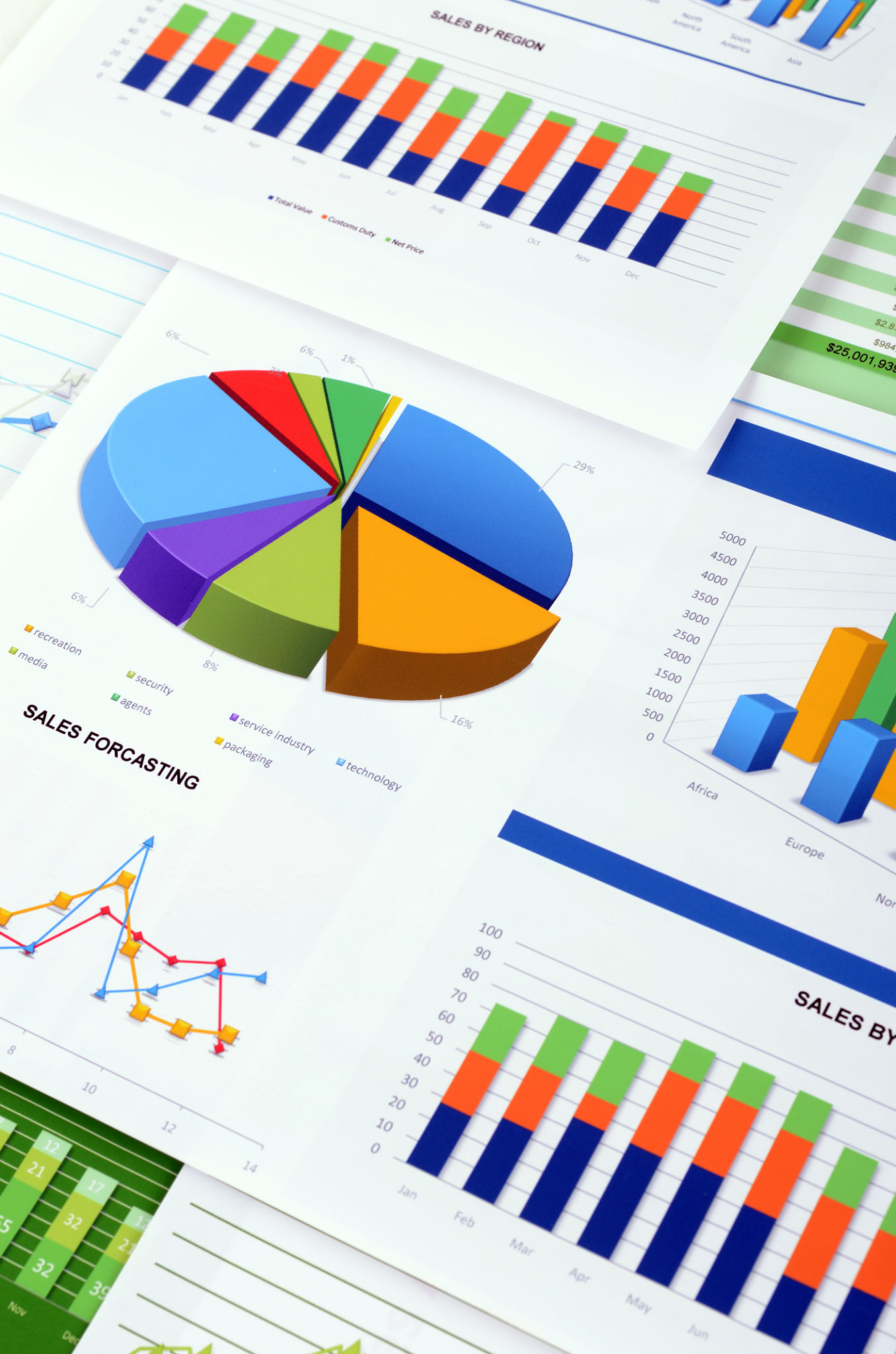How to Make Financial Reports Actually Useful for Decision-Making
Many business owners view financial reports as an obligation rather than a tool—a necessary evil produced for tax purposes or banking requirements rather than a valuable resource for decision-making. At Fiscal Sense, we believe financial reports should be among your most useful business tools, providing actionable insights that drive smart decisions.
This May, as you approach the midpoint of your fiscal year, it's the perfect time to transform your financial reports from compliance documents into strategic assets.

Here's how to make your financial reports genuinely useful for decision-making.
Customizing Reports for Different Stakeholders
Standard financial reports often miss the mark because they aren't tailored to their audience. Different stakeholders need different information presented in different ways.
Example:
- For owners/executives: Focus on overall profitability trends, cash flow projections, and performance against strategic goals
- For sales managers: Highlight revenue by product line, customer acquisition costs, and customer profitability
- For operations managers: Emphasize expense categories they control, productivity metrics, and variance from budget
- For department heads: Show only their departmental numbers with relevant KPIs
Real-world application:
A manufacturing client was providing the same financial packet to all department heads. Their reporting was redesigned so the production manager received detailed information on materials usage, labor efficiency, and scrap rates, while the sales manager got customer acquisition costs, revenue by product line, and contribution margins. Both reported making better decisions with information relevant to their responsibilities.
The key is asking each stakeholder: "What information would help you make better decisions?" Then design reports that deliver exactly that.

Visual Representation of Financial Data
Numbers in columns rarely tell a compelling story or highlight important trends. Visual representation transforms data into insights.
Effective visualizations include:
- Trend lines showing performance over time
- Bar charts comparing actual results to budget or prior periods
- Pie charts showing expense or revenue composition
- Dashboards with multiple visual indicators
- Heat maps identifying problem areas or opportunities
Example:
Converting a restaurant's P&L statement into a visual format revealed that food costs as a percentage of sales were gradually increasing every month—a trend that wasn't obvious in the standard financial statements. A simple line graph made this trend unmistakable, prompting an investigation that uncovered portion control issues in the kitchen.
Remember that different metrics require different visualization types:
- Use line charts for trends over time
- Use bar charts for comparisons between categories
- Use pie charts for showing composition
- Use scatter plots for showing relationships between variables

Key Performance Indicators That Drive Action
Not all numbers matter equally. Identifying the critical few metrics that truly impact your business creates focus and drives action.
Effective KPIs should be:
- Directly tied to strategic objectives
- Leading indicators when possible (not just reporting what already happened)
- Actionable (something you can influence)
- Simple enough to be easily understood
Example KPIs by industry:
- Retail: Sales per square foot, inventory turnover, average transaction value
- Service business: Utilization rate, revenue per employee, client retention rate
- Manufacturing: Yield rate, on-time delivery percentage, cost per unit
- Professional services: Realization rate, billable hours ratio, client acquisition cost
Real-world application:
An e-commerce business was tracking dozens of metrics monthly but taking little action. They identified three critical KPIs—customer acquisition cost, average order value, and repeat purchase rate—that directly drove profitability. By focusing on these three metrics, they made targeted improvements that increased profit by 32% within six months.

Moving Beyond Standard P&L and Balance Sheets
Standard financial statements follow accounting rules that sometimes obscure the information needed for operational decisions.
Consider adding these non-standard reports:
- Contribution margin by product or service line
- Customer profitability analysis
- Cash conversion cycle calculation
- Return on marketing investment by channel
- Employee productivity metrics
Example:
Standard P&L statements for a consulting firm showed healthy overall profits, but a customer profitability analysis revealed that 15% of clients were generating 60% of profits while another 20% were actually unprofitable when all costs were properly allocated. This led to a repricing strategy for unprofitable clients and expanded services for the most profitable ones.

Implementing Financial Dashboards
Dashboards consolidate key information into a single view, making it easier to monitor performance at a glance.
Effective dashboard elements include:
- Visual indicators of performance against targets
- Trend indicators showing direction and momentum
- Exception highlighting that draws attention to problems
- Drill-down capabilities for investigating issues
- Mobile accessibility for monitoring on the go
Example dashboard metrics for a retail business:
- Daily sales vs. target (with trend line)
- Current month gross margin percentage
- Inventory turns by department
- Labor cost as percentage of sales
- Top and bottom 3 performing products
Real-world application:
A multi-location service business implemented a daily dashboard showing key metrics for each location. Within weeks, managers were engaging in friendly competition to improve their metrics, and underperforming locations began adopting practices from the leading locations. Overall company performance improved by 18% within three months.

Frequency and Timing of Financial Reporting
Annual or quarterly financial reports are too infrequent for operational decision-making, while daily reporting can create information overload.
Effective reporting cadence:
- Daily: Cash position, sales
- Weekly: Labor costs, key operational metrics
- Monthly: Complete P&L, balance sheet, KPI analysis
- Quarterly: Strategic review, market comparisons
- Annually: Comprehensive financial analysis
Example:
A contractor was reviewing job profitability only upon completion—often months after issues first developed. By implementing weekly job cost reporting that compared actual hours and materials to budget, they identified problems while they could still make corrections. Problem jobs went from 20% of projects to less than 5%.
Timing matters too:
Financial reports delivered on the 15th of the following month are already outdated. Aim to deliver reports within 5 business days of period close for maximum relevance and impact.

Making Reports Accessible and Understandable
Even the best reports are useless if key decision-makers don't understand them or can't access them when needed.
Strategies for improving accessibility and understanding:
- Include brief executive summaries with key takeaways
- Add narrative explanations of significant variances
- Use consistent formatting and terminology
- Provide access via mobile devices and cloud platforms
- Include a glossary of terms for financial novices
- Create video summaries for visual/auditory learners
Example:
A healthcare practice manager was overwhelmed by financial reports and ignoring them entirely. A one-page "Financial Vital Signs" report with five key metrics, brief explanations, and clear visualizations was developed for the practice manager. Within months, she was not only using this report but requesting additional metrics as her financial literacy improved.

Turning Insights into Action Plans
The ultimate goal of financial reporting is to drive action. Reports should include or be followed by specific action plans.
Action-oriented reporting includes:
- Clear identification of issues requiring attention
- Recommended actions for addressing problems
- Assignment of responsibility for each action
- Timeline for implementation
- Method for measuring success
Example action plan template:
Issue Identified: Declining gross margin
Recommended Action: Review pricing strategy
Responsible Party: Sales Director
Timeline: 30 days
Success Measure: 2% margin improvement
Issue Identified: Increasing DSO
Recommended Action: Implement new collection process
Responsible Party: A/R Manager
Timeline: 45 days
Success Measure: Reduce DSO by 5 days
Issue Identified: High customer churn
Recommended Action:Develop retention program
Responsible Party: Customer Success
Timeline: 60 days
Success Measure: Reduce churn by 10%

The Bookkeeper's Role in Useful Financial Reporting
Creating truly useful financial reports starts with accurate, timely, and well-organized financial data—the cornerstone of what Fiscal Sense provides. Without clean data and proper categorization, even the best-designed reports will yield misleading insights.
At Fiscal Sense, we help businesses:
- Ensure transaction data is accurate and properly categorized
- Establish consistent coding practices for meaningful analysis
- Set up the chart of accounts to support insightful reporting
- Create custom reports tailored to your specific decision-making needs
- Export clean data to visualization tools when needed
While your strategic decisions are ultimately yours to make, having reliable financial information presented in accessible, actionable formats makes those decisions significantly easier and more effective.
Ready to transform your financial reports from obligation to opportunity? Contact us today to discuss how our bookkeeping services can provide the foundation for financial reports that actually drive better business decisions.

________________________________________________________
Fiscal Sense specializes in providing comprehensive bookkeeping services with a focus on creating useful, actionable financial information. Our team of professionals is dedicated to helping you understand your numbers and use them to make better business decisions.
